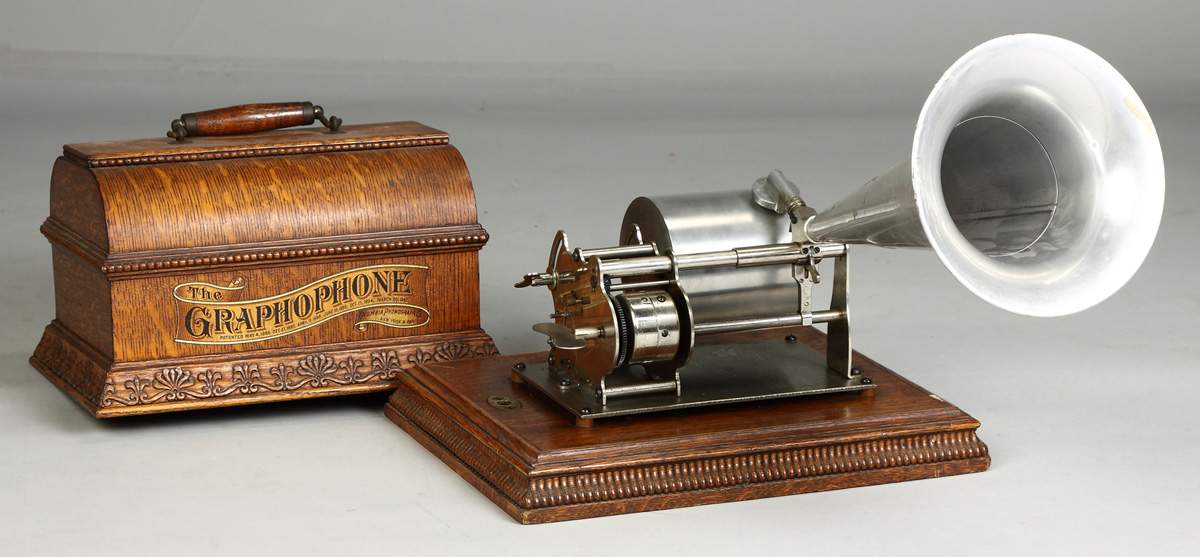A speaker is a device that converts electrical signals to sound waves. It is a transducer; that is, a device that converts one form of energy to another. For a speaker to give the highest possible degree of quality sound, we must incorporate more than one transducer to output a wide range of frequencies.
The first electrical speaker device was constructed and patented by Alexander Graham Bell in 1876 for the purpose of making the telephone. Later, Ernst Siemens and Nicola Tesla improved Bell’s invention in 1877 and 1881 respectively.
The phonograph was developed as a result of Thomas Edison's work on two other inventions, the telegraph and the telephone. In 1877, Edison was working on a machine that would transcribe telegraphic messages through indentations on paper tape, which could later be sent over the telegraph repeatedly.
He experimented with a diaphragm that had an embossing point and was held against rapidly-moving paraffin paper. The speaking vibrations made indentations in the paper. Edison later changed the paper to a metal cylinder with tin foil wrapped around it. The machine had two diaphragm-and-needle units, one for recording, and one for playback. When one would speak into a mouthpiece, the sound vibrations would be indented onto the cylinder by the recording needle in a vertical (or hill and dale) groove pattern.
The invention was original, and it was reported in several New York newspapers, and in other American newspapers and magazines. The Edison Speaking Phonograph Company was established on 24 January 1878, to exploit the new machine by exhibiting it. As a novelty, the machine was an instant success, but was difficult to operate except by experts, and the tin foil would last for only a few playings.
Ever practical and visionary, Edison offered possible future uses for the phonograph; among them, the reproduction of music, teaching of elocution, and other educational purposes, such as preserving the explanantions made by a teacher, so that pupils can refer to them any time.
In the void left by Edison who was busy with his electric lamp invention, others moved forward to improve the phonograph. In 1880, Alexander Graham Bell won the Volta Prize for his invention of the telephone. Bell used his winnings to set up a laboratory to further electrical and acoustical research, working with his cousin Chichester A. Bell, a chemical engineer; and Charles Sumner Tainter, a scientist and instrument maker.
They made some improvements on Edison's invention, mainly by using wax to replace tin foil, and a floating stylus instead of a rigid needle which would incise, rather than indent, the cylinder. A patent was awarded to C. Bell and Tainter in 1886. The machine was exhibited to the public as the graphophone.

Edison introduced the Improved Phonograph by 1888, shortly followed by the Perfected Phonograph. The Edison Concert Phonograph, which had a louder sound and a larger cylinder was introduced in 1899.
A new business phonograph was introduced in 1905. Similar to a standard phonograph, it had alterations to the reproducer and mandrel. The early machines were difficult to use, and their fragility made them prone to failure. Even though improvements were made to the machine over the years, they still cost more than the popular, inexpensive Dictaphones.
It was only in the 1930s that filters were used in speakers to increase the level of sound pressure, frequency response and overall quality of the device output. The Shearer Horn System for Theatres was the first speaker system of industry standard; it was installed in 1937. This speaker system was installed by Metro-Goldwyn-Mayer, an American media company that is in production and distribution of TV programs and movie.
*The article was published in the PSC Newslertter, 2nd School Semester 2010/2011.